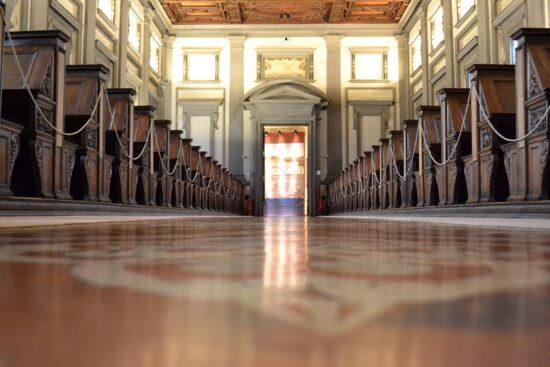San Lorenzo Complex
A few steps north of the Baptistery of San Giovanni lies another important site of the historic center, the San Lorenzo Complex. Piazza San Lorenzo takes its name from one of the most iconic religious edifices of the city, the San Lorenzo Basilica, that dominates the main market district.
In 393 the Bishop of Milan Aurelio Ambrogio (later St. Ambrogio), the most important Church figure of the 4th century revered as a saint by all Christian churches accepted the invitation of the community of Florentia and stayed in the city for about a year. During that time he founded the church of San Lorenzo, that would serve as the basilica of Florentia for the next 300 years.
Thus the basilica of San Lorenzo, located outside the city walls at the time, became the oldest consecrated church of Florence, that would accompany the city for more than 1600 years. The basilica was rebuilt in Romanesque style and reconsecrated during the term of the first Florentine Pope Nicholas II in 1059.
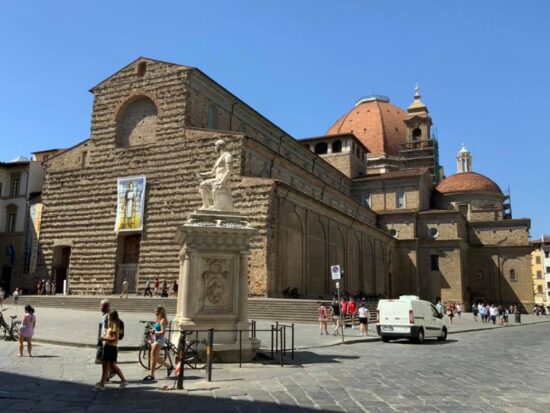
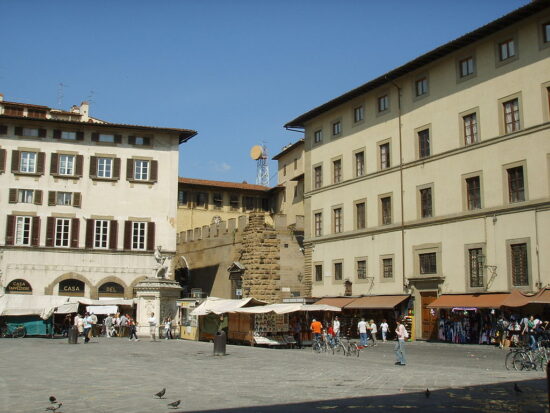
By 1419 Giovanni di Bicci de’ Medici, founder of the Medici dynasty had been established as the exclusive banker of the papal seat. His economic affluence allowed him to take on a task that would establish his family as one of the great patrons of his city. The symbolism of the oldest church in the city would obviously work perfectly.
The project of the complete reconstruction was entrusted to Filippo Brunelleschi (also responsible for Santa Maria del Fiore’s massive dome) but work went on with a slow pace and many unresolved practical issues until the architect’s death in 1446. By then only the sacristy had been completed.
Cosimo the Elder (son of Giovanni) stepped in and the main bulk of the initial design was finally completed by 1461, when the basilica was consecrated again, just in time for Cosimo’s burial under the main altar. From then on Basilica di San Lorenzo would be the official burial place of the Medici, the official church of the dynasty.
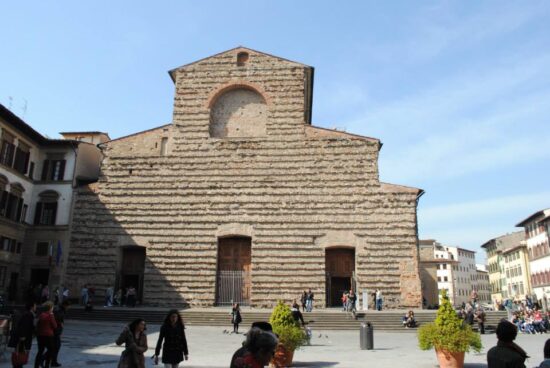
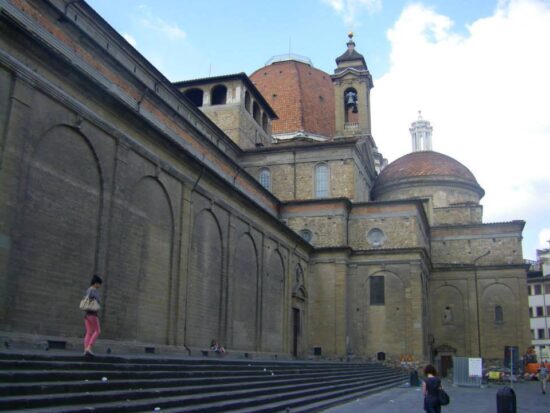
In 1520 Michelangelo began working on the new sacristy on the request of Cardinal Giulio de Medici, future Pope Clemens VII. The artist was also given the task of creating a design for the Laurentian Library and a new facade. The latter was designed, carved in a wooden model but never realized. To this day there are debates and public demands for its implementation.
After 1524, Michelangelo started working on the Laurentian Library and the sculptures of Lorenzo de’ Medici, Duke of Urbino and Giuliano de’ Medici, Duke of Nemours.
Although Michelangelo left Florence before his design on the library was carried through (1534), the architects that took over, followed his design until the library finally opened to the public in 1571. The Basilica’s rough exterior is completely balanced by its elaborate Renaissance interior, embellished by the works of Donatello and his assistants, of Raffaellino del Garbo, Ghirlandaio, Rosso Fiorentino and Bronzino among others.
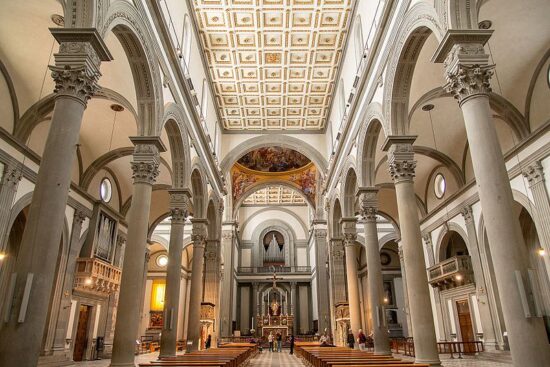
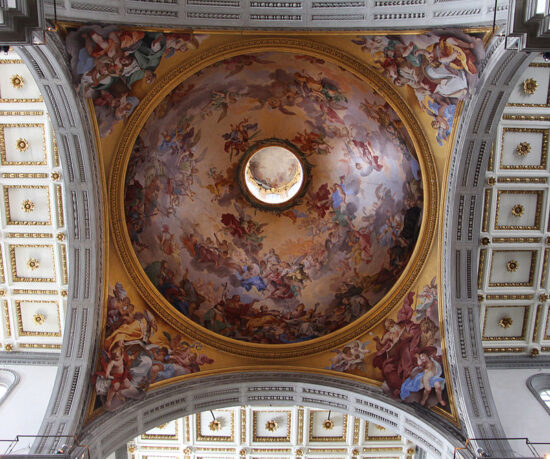
The Bibliotheca Laurenziana is not only famous because it was designed and built (between 1524 and 1534) by Michelangelo himself. It is also famous for its impressive selection of invaluable manuscripts, Egyptian papyrus, incunabula and books collected by the Medici family through the years.
Unfortunately the bibliotheca is open to the public only during special occasions and exhibitions but if the opportunity arrives don’t miss the chance to visit it. It can be accessed through the Canons’ cloister, which dates back to 1462, one year after the basilica’s consecration.
The ticket for the complex includes a visit to the church, the Old Sacristy, the Treasure Museum and the Medici Chapels, where most members of the Medici dynasty are entombed and took more than 400 years to be complete.
